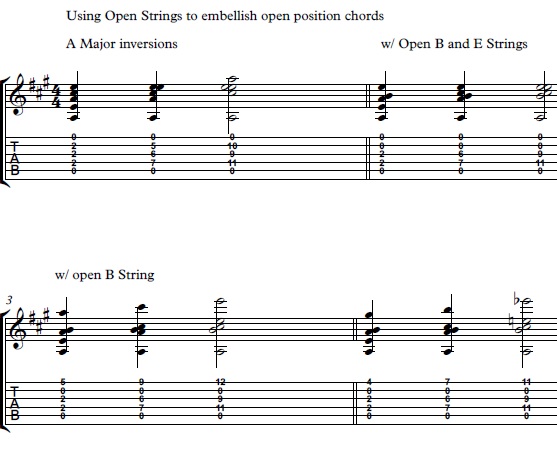

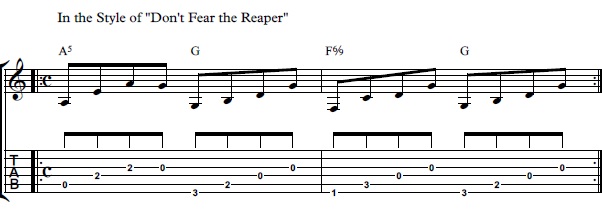
Don’t Fear The Reaper by Blue Öyster Cult On Guitar – Made Easy With Video
Check out this Easy Guitar Lesson on How to Play “Don’t Fear the Reaper” by Blue Öyster Cult. This step by step video, taught by Guitar Control instructor Jon MacLennan, along with the free tabs will have you rockin’ this guitar classic in record time.
[contentwall] <ahref=”https: guitarcontrol.com=”” wp-content=”” uploads=”” 2020=”” 05=”” 33-dont_fear_tab.jpg”=”” target=”_blank” rel=”noopener”> [/contentwall][ninja-popup ID=715]
[/contentwall][ninja-popup ID=715]
Introduction
Hey how is it going? I hope you’re doing fantastic. My name is Jon MacLennan and I want to give you a guitar lesson today in the style of Blue Oyster Cult, Don’t Fear The Reaper, this is a really cool arpeggiated riff. So let’s zoom in and break it down.
Don’t Fear The Reaper
So the main riff for Don’t Fear The Reaper is based off of just three chords; an A5, a G and F6/9 and a G again. So what we’re going to do is we’re going to start on that A5 where I play that with just two fingers. I put my second finger on the fourth string second fret and then put my third finger right underneath it on the third string second fret and then I arpeggiate each note like this… and then I played the third string open. Then I move to a G chord which I play with just two fingers, my third finger and my second finger on the third fret and the second fret here. And you can see I’m on the sixth string and then the 5th string, they’re just kind of diagonal, and then I just go down four strings like this starting at the sixth string and go. So if I put those two together it sounds like this…
Then I move to basically an F6/9 which all you gotta fret is one and three here. So I’m on the sixth string 1st fret, 5th string 3rd fret and then I keep those fingers kind of up on the tips because I’m going to let the two strings below ring open. You really want to try it on the tips to get this sound, they’re bringing out and then back up to that G sequence again. So if I put that together slowly they’re all eighth notes. You can do it all on down strokes with the right hand.
Conclusion
Right on well I hope that helps you out. Be sure to click the link below to subscribe and we’ll catch you in the next video lesson. Thanks for watching How To Play “Don’t Fear the Reaper” by Blue Öyster Cult.
GET Jon Maclennan’s courses by clicking in the links below – GO!!! ➜
8 Guitar Secrets of Eric Gale Lesson
16 Acoustic Guitar Songs and Lessons
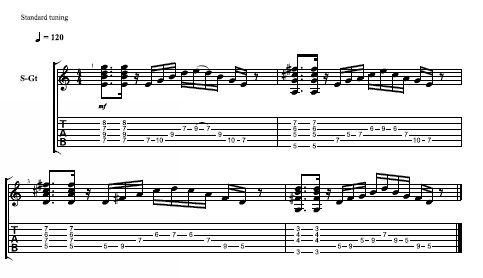

How To Play “Eight Days A Week” By The Beatles | Watch This Easy to Follow Video
In this Guitar Control video, Instructor, John Maclennan, is going to show you Easy Acoustic Guitar Lesson on How to Play “Eight Days a Week” by The Beatles. This is a great song to get your strumming going, working on a little bit of a bass note strum pattern. We are going to take a closer look at this riff and really break it down in depth. And what better band to learn anything to do with chords and chord progressions than the Beatles.
I remember in my music business class when another student asked if you can copyright a chord progression, and the teacher replied, if you could then The Beatles could sue everyone.
 GET Jon Maclennan’s courses by clicking in the links below – GO!!! ➜
GET Jon Maclennan’s courses by clicking in the links below – GO!!! ➜
How to Play Eight Days A Week by The Beatles On Guitar
Step 1: The A Section
Let’s take a closer look at these Eight Days A Week guitar chords. The A section begins with an D chord. To play an open D chord, place your pointer finger on the 2nd fret 3rd string, your ring finger on the 3rd fret 2nd string, and your middle finger on the 2nd fret 1st string. For the open D chord you strum from the 4th string down since the open 4th string is a D note. After you play the open D chord, you then move to an open E major chord.
Whenever someone writes a capital letter for a chord name and nothing after it, that also means it is a major chord. So whether you write D or D major, they are both the same chord. Now back to the E. Place your middle finger on the 5th string on the 2nd fret, then place your ring finger right under it on the 4th string on the 2nd fret, and place your pointer finger down on the 3rd string 1st fret. Then strum all six strings down from the 6th string all through way through the 1st string. Then to a G chord.
The way that John is holding down this chord is actually very interesting, it’s not the normal way to hold it down, it’s the same notes but the fingering is different. More of a folk style way to play it. The folk style way to play this chord has you placing your third finger down on the 6th string 3rd fret, your third finger is arched over and just barely touches the 5th string to mute it. In this way of playing the G chord you actually do not want to hear that 5th string. Then place your pinky finger holds down the 3rd fret on the 1st string. Strum this chord from the 6th string down all the way through the 1st string as well, again you won’t hear that 5th string because you are muting so its still ok to strum it since it won’t ring out, it is indifferent. So for this G you only have two fingers on the fretboard, your ring finger and pinky finger. Then after that G go back to D.
The verse is basically just D, to E, to G, back to D and then repeat. It starts and ends with a D so when you repeat the D will feel doubled. If you are enjoying learning this song, be sure to check out our other lesson how to play Dear Prudence for another The Beatles classic to add to your repertoire.
Step 2: The Strum
The way they are strumming this verse is pretty interesting. It’s really cool and really makes this song have a lot of life and character to it. First he is picking the lowest string of the chord and then strumming down down up down up for each chord. Same strum on all of them. So again with his strumming hand he is hitting the bass note and then strumming before he strums the whole thing. This almost gives the effect of having a bass player playing with a guitarist. Sounds a little bit more two dimensional than if you were to just strum regularly.
Step 3: Section 2
Then you are going to go to a B minor, which this is a barre chord. So take your pointer finger and barre it on the 5th string 2nd fret all the way down through the 1st string. Then place your ring finger on the 4th string 4th fret, your pinky right under it on the 3rd string 4th fret, and your middle finger on the 2nd string 3rd fret. Strum from the 5th string all the way down through the 1st string. Do the same strum we did before.Then you are going to go to a G chord again.
We are going to play this G chord a little differently than we did before though. We play almost just like a stock G chord, where you would have your middle finger on the 6th string 3rd fret, your pointer on the 5th string 2nd fret, your ring finger on the 2nd string 3rd fret, and your pinky right under it, on the 1st string 3rd fret, strumming all the strings from the 6th string through the 1st string. But again John is leaving out that 5th string, so don’t worry about placing your pointer finger on the 5th string 2nd fret, and use your middle finger again to really arch and just lightly touch that 5th string muting it so you won’t hear it when you strum. So holding down the 6th string 3rd fret with your middle finger and also using it to mute the 5th string, just like you did earlier, but now the chord uses both your ring and pinky fingers on the 2nd and 1st strings, both on the 3rd fret and same strum on this chord, too.
So far for this part we play B minor, to G, back to B minor and then to an E major. The same E major we did earlier. Then go back to the original chord progression from section A. The next section is the chorus where he signs, “Eight days a week…” Where you would just strum an A chord. To play an A chord hold down the 4th, 3rd, and 2nd strings all inside the 2nd fret and strum from the 5th string down. He does this for two measures but for each measure he strum does one strum and holds it out the whole measure. A whole note rhythm. Then to B minor to E, and then a build in G to A. Then go back to the top of the song and that is all for today’s lesson!
Recap: How to Play Eight Days A Week by The Beatles On Guitar
I hope you enjoyed learning these Eight Days A Week guitar chords! This is such a beautiful song, it is simple yet there are a few really cool special qualities to it and things that make it a stand out song. For a song that is mostly just strumming open chords, that strum is so distinct and you know right away that it is this song. I think that would almost be harder to do with just chords. So remember dont only learn the song, but learn from the artist. Think about what they do to make there song’s just a little different and how they stick out among the rest. Bring these elements into your own playing and let them help spark your creativity, and of course, as always, have fun!
Best of Pentatonic Scale Lessons to Play
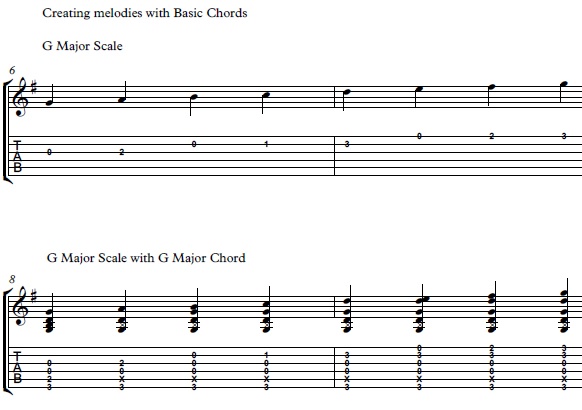

Landslide by Fleetwood Mac Played with a Capo on Acoustic Guitar – Made Easy with Video
Hey, how’s it going this is Jon McLennan with Guitar Control, I want to give you a guitar lesson today this is the little finger style 101 with Fleetwood Mac’s “Landslide”. It’s a beautiful song and it’s an amazing guitar part we’ve got a capo on the 3rd fret.
[contentwall] [/contentwall]
[/contentwall]
Click on the Tabs button to follow the chords and tabs.
I’m going to begin on a C chord 3, 2, 0, 1, 0, then I’m going to walk down to a G over B, and the way that I play that is second finger on the 2nd fret 5th string open 3rd fret with the pinky on the 2nd string I just play those inner four strings. I’ve go from a C like this to a G over B it’s important that you use your second finger and pinky don’t go like this with your first and third then I move down to an A minor 7, it’s like a C chord you just remove your third finger pretty sweet then back up to a G over B.
So you might want to start by practicing these grips and do it with the recording go one to two beats on each chords 2, 3, 4, 1, 2, 3, 4, 1, 2, 3, 4. Now I’m just playing this without a pick, right now you can do it with the pick and play hybrid style but I like kind of the warm sound of using my fingers. So what’s going on here is I’m going thumb, index, thumb, middle, and then thumb, index, thumb, one E and two E and the three. So I really just use three fingers here of the right hand and I keep that pattern consistent and then move it through the cords it is really slow one okay well be sure to take it slow and make sure that you’re doing that finger-picking pattern in the right order that’s very important go slow and get the fingers right copy just with just what I was doing. Make sure to subscribe on our You Tube Channel and we’ll see you in our next video lessons, thanks for watching.
GET Jon Maclennan’s courses by clicking in the links below – GO!!! ➜
16 Ultimate Guitar Chords Lessons
Related Post
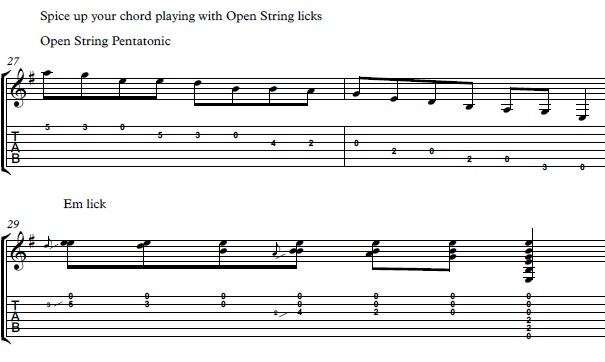

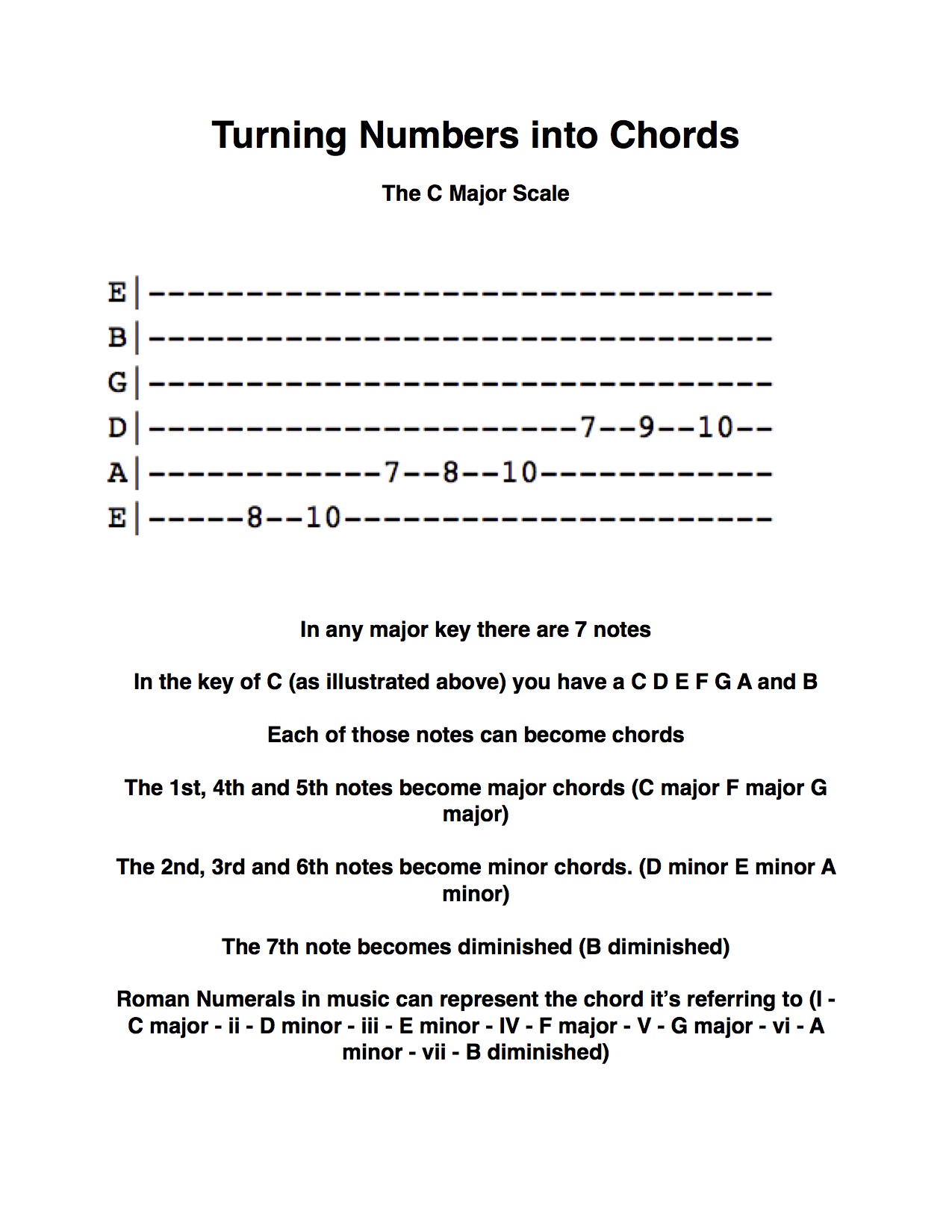
The Easiest and Most Important Guitar Theory Lesson For Beginners – Guitar Lesson w/ Sean Daniel
 [/contentwall][ninja-popup ID=715]
[/contentwall][ninja-popup ID=715]
Jazz Guitar Lessons
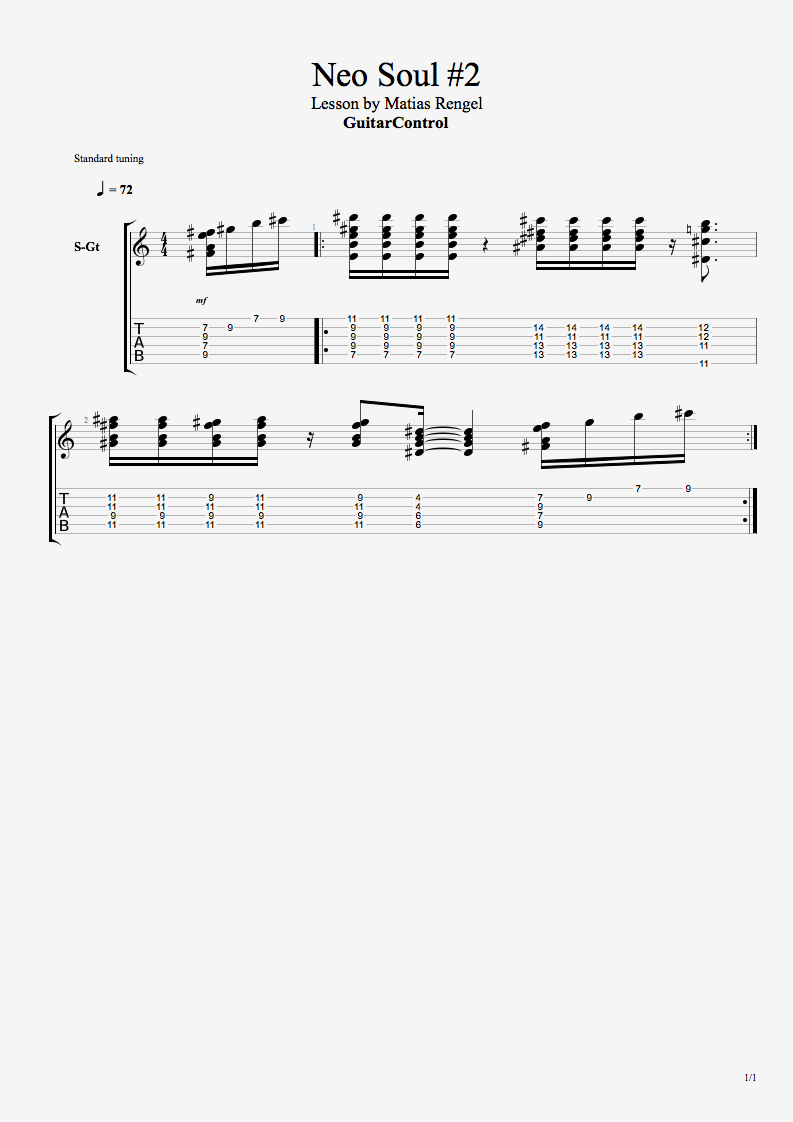
How To Play a Groovy Jazzy Chord Progression – Jazz Guitar Lesson
Hey, this is Matias Rengel with Guitar Control, today I’ll be teaching this really cool group it’s a little bit jazzy and combines a lot of chords in different rhythms.
[contentwall]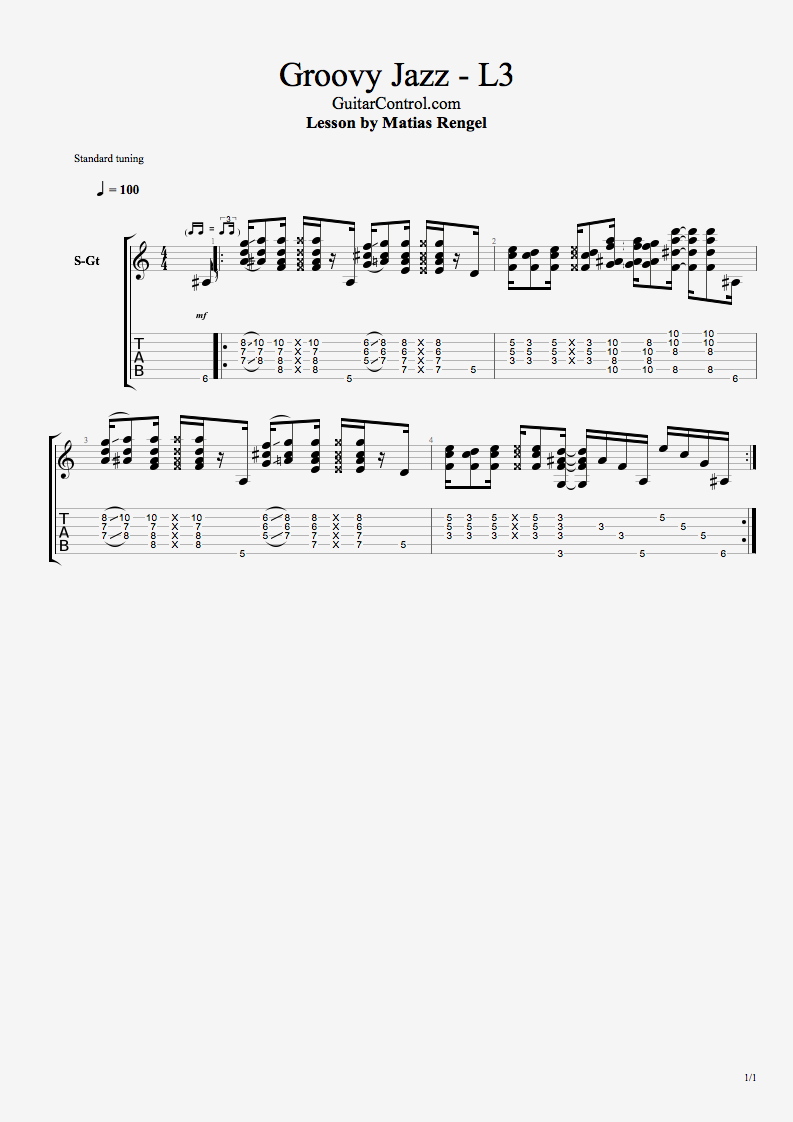 [/contentwall]
[/contentwall]
Click on the Tabs button to follow the chords and tabs.
So the first thing that I would like to show you is the chords and then we’re going to go into the actual rhythm of this, we have many things happening here most of them are on the same chord but different inversions the first one we start with our index finger on the 6th fret of the 6th string then we don’t play the 5th were palm muting it and the middle finger is going to be on the 7t fret as well as the ring finger 7th fret of the 4th and 3rd then we got the pinky on the front of the 2nd then we got an inversion of this chord because that will just play in B flat major 6, then we got inversion in front of your 7.
So for that we’re going to take this two right here and we’re going to move them one fret up and change the string so they’re going to be on the 6th and 5th fret on the 5th and 4th and then the pinky is going to go on the 10th fret of the 2nd string and the index on the 7th fret of the 3rd then we’re going to go into this one for some A7 you could say is an a7 sharp 5 or a 7 alter to play entirely you also got other to it but did you say isn’t a 7 altered or an alt and we’re going to place the index finger on the 5th fret of the 6 don’t play the 5th once again then middle finger on the 5th fret of the fourth ring finger on the 6th fret of the 3rd and pinky and 6 further of a second and then go to an inversion of an A7 which is this. For that we have our middle finger on the 7th fret of the 5th ring finger on the 7th fret of the 4th we have the index finger on the 6th fret of the 3rd and pinky on the 8th for the second.
We’re going to go into this one for this one we have our index I like to put the index all across the 3rd and bring the middle finger on the 5th fret of the 5th ranked finger on the 5th fret of the 3rd and pinky on the 5th fret of the s2nd then we bring the same thing chord don’t remove any of the fingers just bring it up so your middle finger is on the 10th fret and the index fingers on the 8th now what you you’re going to do is remove these fingers and just basically put your ring and pinky on the 10th fret of the 2nd and 1st and we’re not going to play the force you could but don’t play it in this case and we’re going to press with the index finger also the 3rd.
Now this is a little bit challenging even for me but I’d like to introduce new things every time I do these lessons and I try to learn very well but at the same time I try to play stuff that is like very normal to me so every time you get something new so if you see me that sometimes it’s a little bit challenging even for me is because I literally made it specifically for research for this lesson, I put a lot of effort into its own and by the way you should also try to not try sometimes you find yourself like playing stuff all the time and it’s very important to challenge yourself from play things that you wouldn’t normally play.
Now we’re going to learn the rhythm, so what we’re going to do is we play with our thumb the 6 and then with our index middle and ring open for turn 2nd you’re going to slide out the pinky so you slide it up to the 10 and then you practice that and then do the same thing here so now you can have a little thing there that you can practice you can just like loop that until you get the group rights to the same remember slide Simon all the fingers bring down hand and then play now here we’re going to go into this one obviously there’s no slide here why do I play the core I seem to hear but this time here’s the pinky choose the chord, now the 2nd time that I play this around it is a quarter now for a little bit of a relief right so for that you’re going to have your index on the 3rd fret in fact you don’t even need this one here you just have the index there, you do is play there the six and the second at the same time up against the 4th we wear two threads up into the 5th.
Now it’s really cool if you give it like a little bit of a shuffle that’s going to make it like moving, like you’re walking. I hope you’ve enjoyed this lesson it’s a little bit challenging but it’s super interesting, it sounds really cool so anyway as you saw there’s the link in description make sure you click on the tab so you can learn what I just showed you and remember to subscribe to our You Tube Channel for daily inter lessons there are so many teachers and so many styles and levels so hit the subscribe button and I would love to know what would you like me to teach you next so leave a comment down below with your answers thank you so much for watching.
[ninja-popup ID=715]




